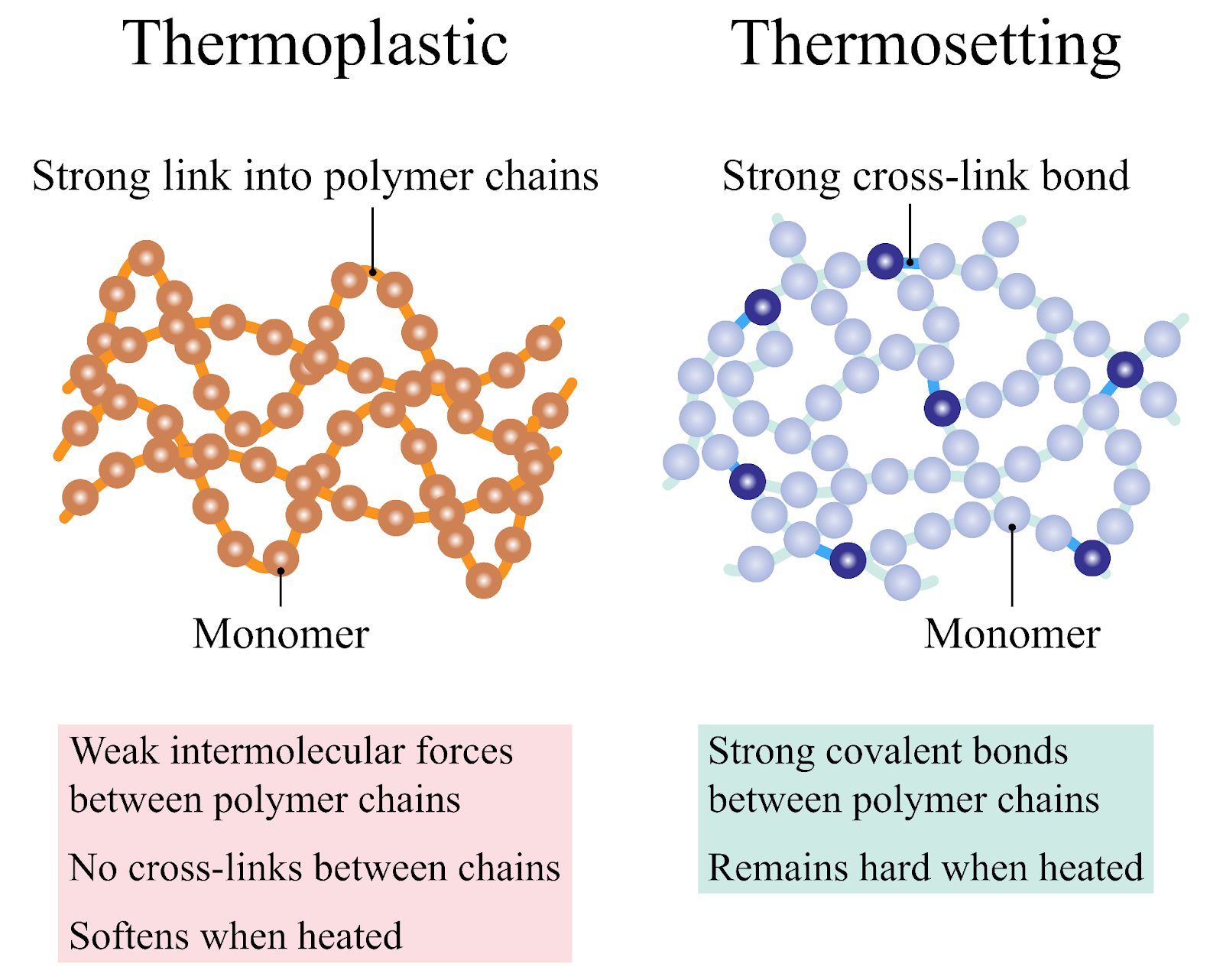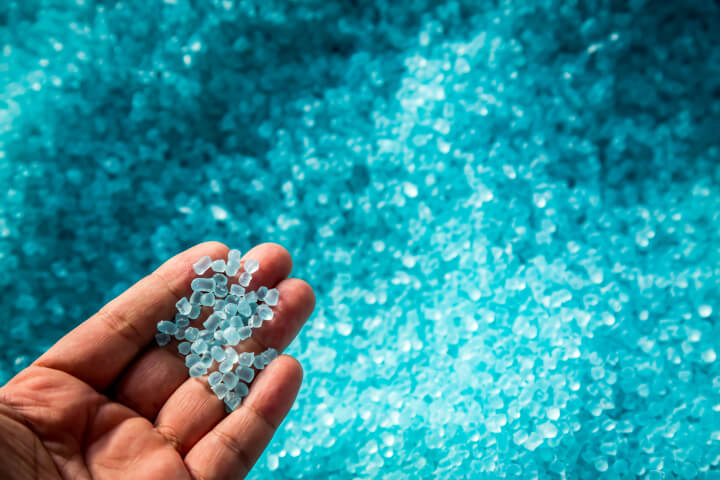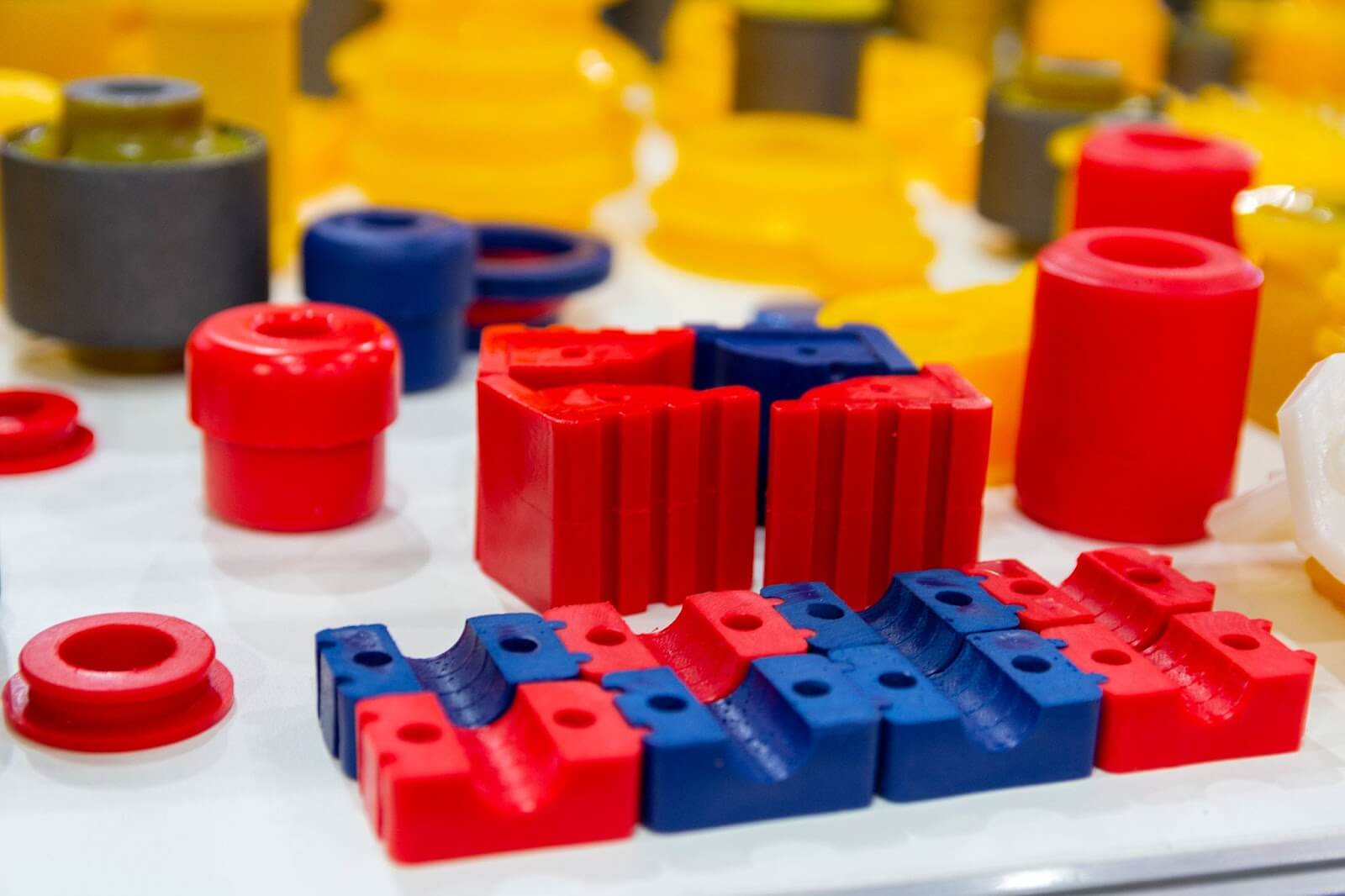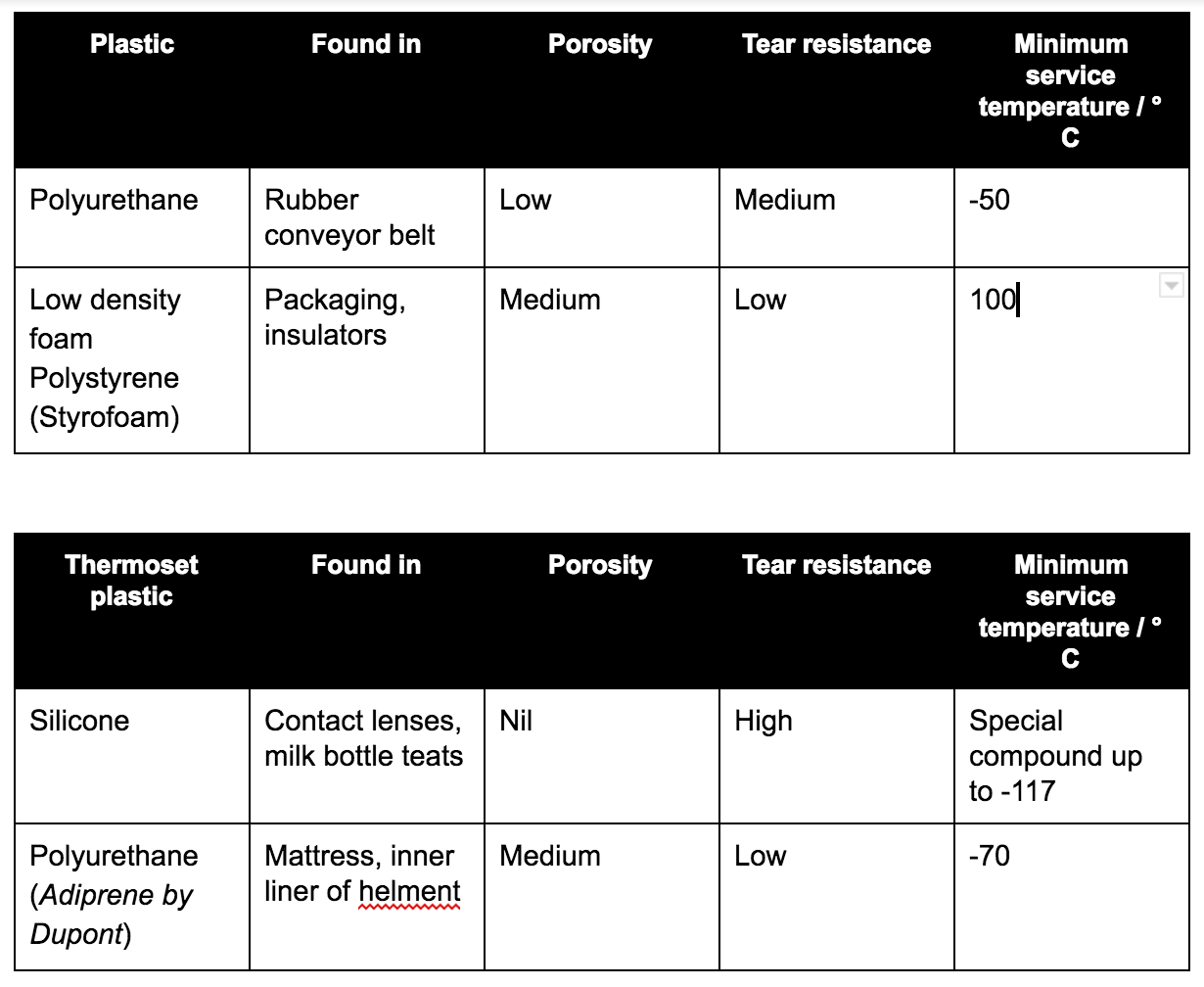Time to read: 5 min
Thermoplastics and thermoset plastics are classes of polymers used in injection molding, CNC machining, 3D printing, and urethane casting. Like elastomers, another class of polymer, thermoplastics and thermosets both consist of long, repeating chains of molecules. Under a microscope, the structure of a thermoplastic resembles a railroad track while a thermoset material looks like a honeycomb. Elastomers have less organized structures with spaghetti-like strands that provide greater viscosity and elasticity.
Product designers are more concerned about material properties than molecules, but the structure of a polymer’s strands affects its processing and performance. Broadly speaking, the main difference between thermoplastics and thermoset plastics is how they behave when heated. Thermoplastics can be remelted and reused, but thermoset materials cannot. These aren’t their only differences, however. As the table below shows, thermoplastics and thermosets also differ in terms of their resistance to forces, heat and chemicals.
| Type of Resistance | Thermoplastics | Thermosets |
| Heat | Less | More |
| Chemicals | Less | More |
| Deformation (Creep) | Less | More |
| Impact | More | Less |
| Shattering | More | Less |
These differences are typical rather than universal, however, and there are hundreds of different thermoplastics and thermosets, each with specific materials properties such as plastic strain rate and service temperature. Knowing whether a polymer is a thermoplastic or a thermoset is important, but designers also need to consider the advantages and disadvantages of each class of polymer, along with categories, applications, and examples of commonly used materials.

Thermoplastics: Advantages and Disadvantages
Thermoplastics are ideal for injection molding because they can be heated, cooled, reheated and reused. During the molding process, solid resin pellets are heated to their melting point. Liquid material enters the mold, where it cools and eventually hardens. Excess thermoplastic material from the runner, a channel in the mold that allows plastic to flow into the cavity, can be recycled into the batch for greater material utilization. Thermoplastics are also relatively easy to surface finish. This supports their use not just with injection molding, but also with CNC machining and 3D printing.
Another advantage of thermoplastic materials is that they can be recycled and reused. With injection molding, thermoplastics can be ground into pellets that are then re-melted. These non-virgin plastics do not retain their original properties indefinitely, however, and the number of times that a thermoplastic can be reused varies by the specific material. With injection molding, thermoplastics are more prone to flash because they tend to have higher viscosities. With any prototyping or manufacturing process, subjecting thermoplastics to high temperatures can cause these materials to soften or melt.

Thermoplastics: Categories, Applications, and Examples
Thermoplastics are one of the three major classes of polymers, but they are further divided into two main categories, each with different material properties based on their molecular structure.
- Amorphous thermoplastics have a less ordered (amorphous) structure. They have a lower resistance to heat but are tough at low temperatures. Sometimes, these materials are clear.
- Semi-crystalline thermoplastics have a more ordered (crystallite) structure but with some amorphous areas. They have greater heat and chemical resistance plus greater strength and stability.
In terms of applications, thermoplastics are used in consumer goods as well as in commercial and industrial applications. This list provides a few examples of thermoplastic products.
- Toys and toothbrushes
- Storage containers
- Water bottles
- Windows and lighting fixtures
- Packaging materials
- Automotive components
- Gear wheels
There are hundreds of different thermoplastics, but these materials are used commonly.
- Acrylonitrile butadiene styrene (ABS)
- Nylon (polyamide, PA)
- Polyethylene terephthalate (PET)
- Polypropylene (PP)
- Polystyrene (PS)
- Polyvinyl chloride (PVC)
- Thermoplastic elastomer (TPE)
Thermoset Plastics: Advantages and Disadvantages
Thermosets are used in injection molding, CNC machining, 3D printing, and urethane casting, a process that uses two-part epoxy materials. With thermosetting resins, a chemical reaction causes a phase change to a solid. Heat may be a byproduct of this reaction, but it is not a key contributor to the chemical cross-linking that joins molecules together. The processing differences between thermosets and thermoplastics are significant, and thermoset materials cannot be reshaped or reformed once they have “set”.
Thermosets resist higher levels of heat, however, and thermosets provide stronger corrosion resistance than thermoplastics. Thermosetting polymers also provide greater resistance to creep, the tendency of a solid material to deform permanently under mechanical stress. Thermosets’ physical and mechanical strength makes them a good choice for many applications, but designers need to consider the tradeoffs.
The biggest disadvantage of thermosets is that they can’t be reheated for reprocessing. They also tend to be more rigid than thermoplastics, less resistant to impact and more prone to shattering. Disposing of thermosets is more challenging, but some materials can be ground into filler materials. Compared to thermoplastics, thermosets are more difficult to surface finish, and because they tend to be harder and more brittle, thermosets are more challenging to machine. During injection molding, it’s important to prevent a thermoset from attaining its cross-linking temperature until the plastic enters the mold.

Thermoset Resins: Categories, Applications, and Examples
Thermosets are a class of polymers that can be further categorized as follows:
- Amino resins
- Epoxy resins
- Phenolic resins
- Polyester resins
- Polyurethanes
- Silicon resins
A plastic resin is an unprocessed polymer-based material, and most plastic resins (including thermoplastic resins) are made from the byproducts of petroleum refinement. With thermoset injection molding, the resins are typically supplied in liquid rather than solid form and require different equipment and procedures.
Thermoset plastics are used in consumer goods such as cooking utensils and billiard balls, but they’re also used in commercial and industrial applications with higher temperatures. Examples of thermoset products include:
- Electronic components
- High voltage insulators
- Heat shields
- Motor components and covers
- Lighting components
- Energy equipment
Medical instruments such as dental tools with overmolded handles also use thermoset plastics because these materials can be autoclaved at high temperatures and pressures. There are many different types of thermosets, but the following materials are commonly used.
- Alkyds
- Epoxy
- Melamine
- Phenolic
- Polyimides
- Polyurethane
- Silicone
- Thermoset polyester
The charts below show some common applications and key specifications for different types of thermoset plastics. Strength and stability are important for epoxy and melamine because of the types of environments in which they are typically used. Porosity, tear resistance, and minimum service temperature are generally more important for polyurethane, silicone, and polystyrene, three thermosetting plastics that are used to meet different requirements.


Material Properties and Material Selection
Thermoplastics vs. thermoset plastics provides a high-level way to understand differences between polymer-based materials. There are hundreds of individual thermoplastics and thermosets, however, and each type of material that you select has specific properties. Because there are so many options, it helps to have an expert’s advice before choosing a plastic.
Fictiv is your operating system for custom manufacturing, and no matter where you are in the design process, we have the resources, know-how, and manufacturing network to make your next injection molding project a success. In addition to helping you choose the right plastic, we offer robust design of manufacturing (DFM) advice and feedback, and can get you T1 samples in as fast as 2 weeks!
Ready to get started? Create an account to get a quote today.










